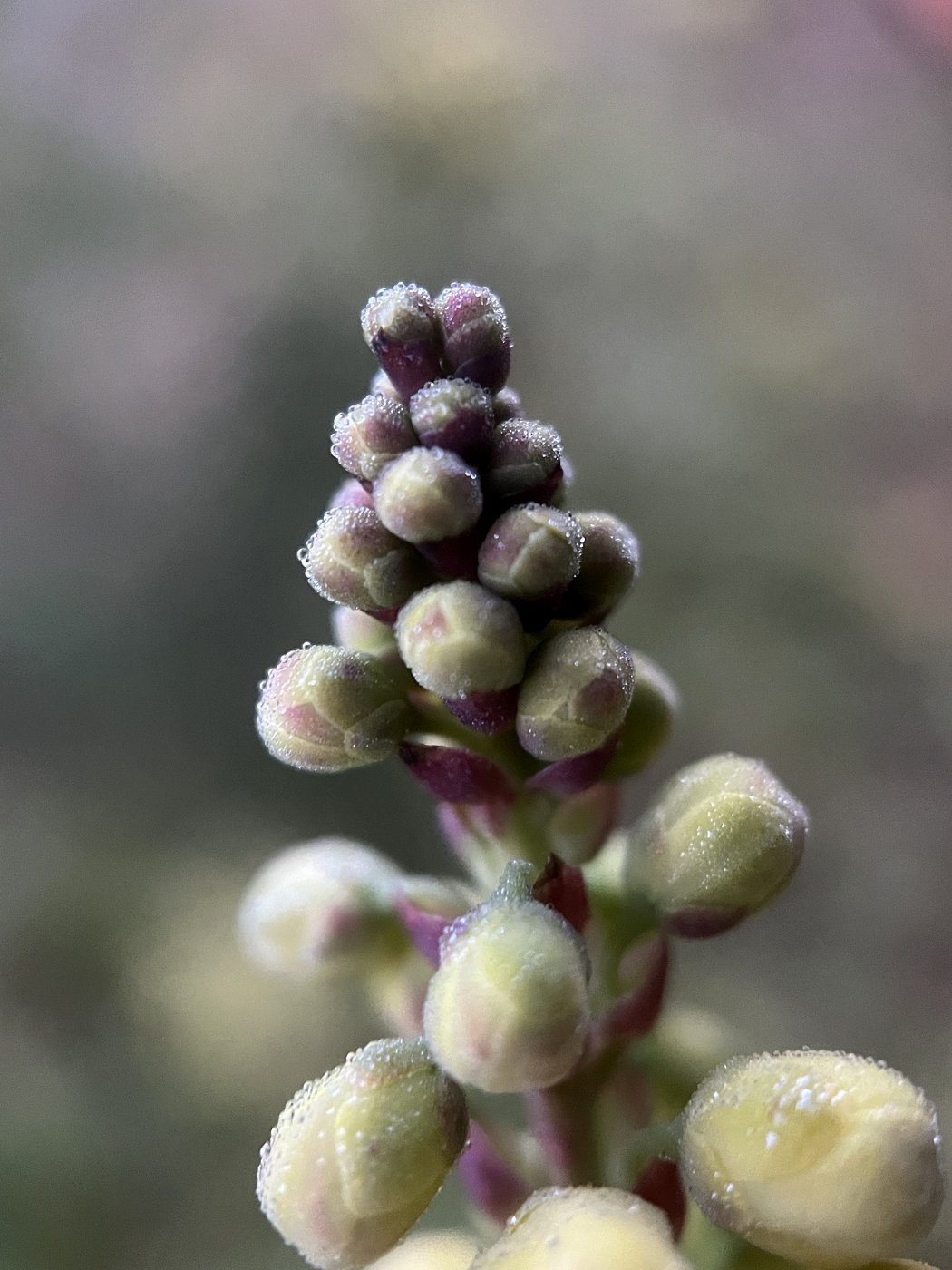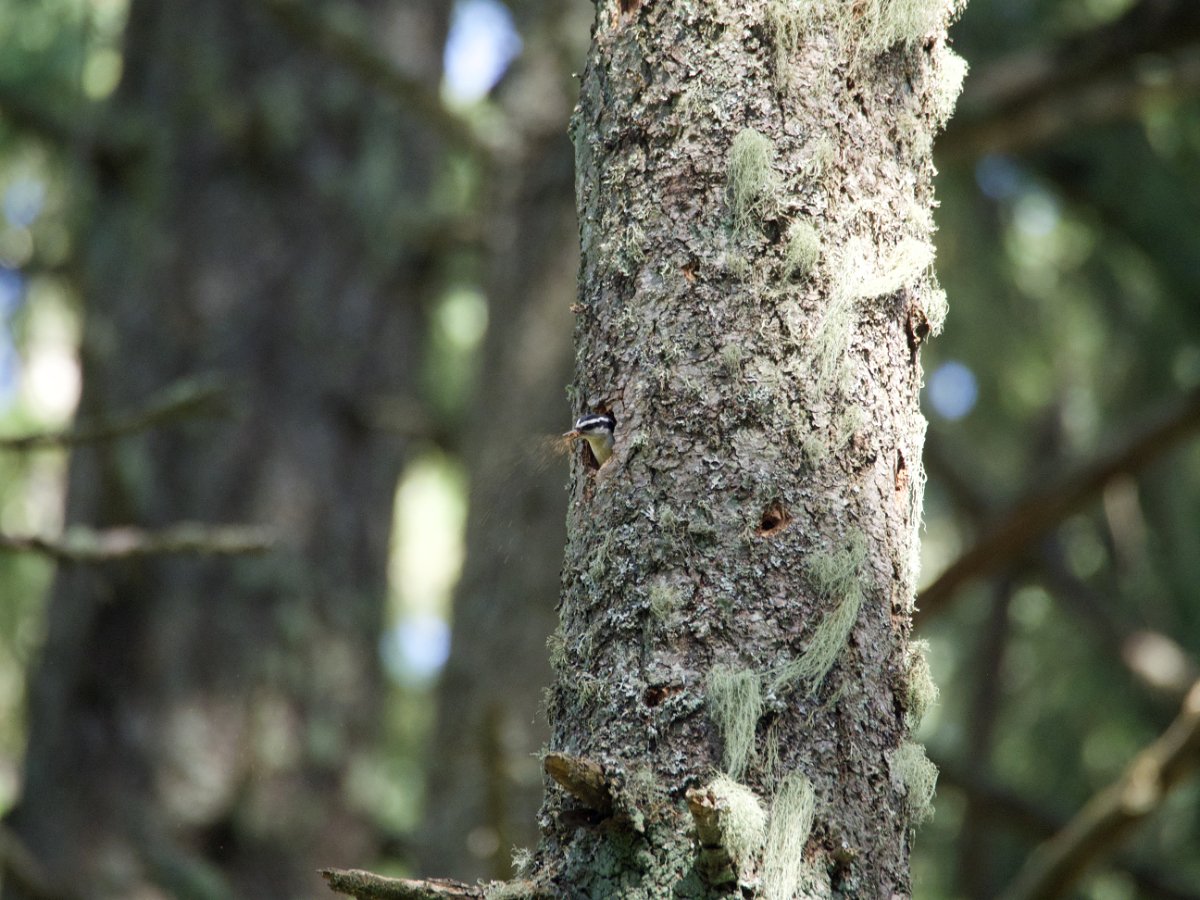While wandering around in the wetlands looking for frog egg masses, we came across signs of beaver. There was a matted, muddy spot where it appeared the beaver liked to sit. It was littered with small, willow branches that had been stripped. Beavers love to eat the inner bark of trees. As we continued wading out in the wetlands, we came across the beaver’s scat floating in the water. It looked like sawdust and it was incased in a thin, transparent sack—that seems helpful in preventing any splinters when depositing, One of our fearless teammates carefully retrieved one of the pellets from the water and brought it ashore. We broke it open and found that it was just as it appeared, fibrous like sawdust.
While doing research about beavers, I came across this interesting information on a beaver’s digestion on the website The Land Between: “The digestive systems of herbivorous animals can either be a single saclike compartment (monogastric), or subdivided into various complex chambers (digastric). Monogastric herbivores, such as beavers, possess a single-chambered stomach where molecules such as lignocellulose can be digested. Monogastric animals that are able to digest these cellulosic materials are known as hindgut fermenters. This process is aided by microorganism fermentation in the intestine, which, in the beaver's case, takes place in a modified cecum. Humans, like many other animals, possess a cecum, but in beavers, it is an enlarged pouch located at the beginning of the large intestine connecting the small intestine to the rest of the large intestine. A beaver’s cecum contains enzymes derived from bacteria and fungi to help break down the tough cellulose molecules found in woody plants. To ensure they digest as many nutrients as possible from their meal, the beaver partakes in a method known as coprophagy, where the individual eats their own feces to run the food through their digestive system several times. This process might be gross by human standards, but it is an example of highly adaptive strategy that allows beavers to thrive on a specialized diet.” Fascinating creatures!
Beavers usually defecate in the water, so you don’t often come across their scat. They can carry the Giardia parasite, which causes giardiasis which is also known as "beaver fever". The parasite is spread through their feces, so I recommend that you don’t handle their feces and that you are careful around water sources where beavers are present. Giardiasis is an intestinal disorder that causes mild to severe diarrhea. Dogs can also get giardiasis by drinking water contaminated with the feces of infected animals.
Resource
Wood You Eat That? An Overview of Beaver Teeth and Digestive System. https://www.thelandbetween.ca/2023/10/wood-you-eat-that-an-overview-of-beaver-teeth-and-digestive-system/#. Accessed 6 Apr. 2025.




































































